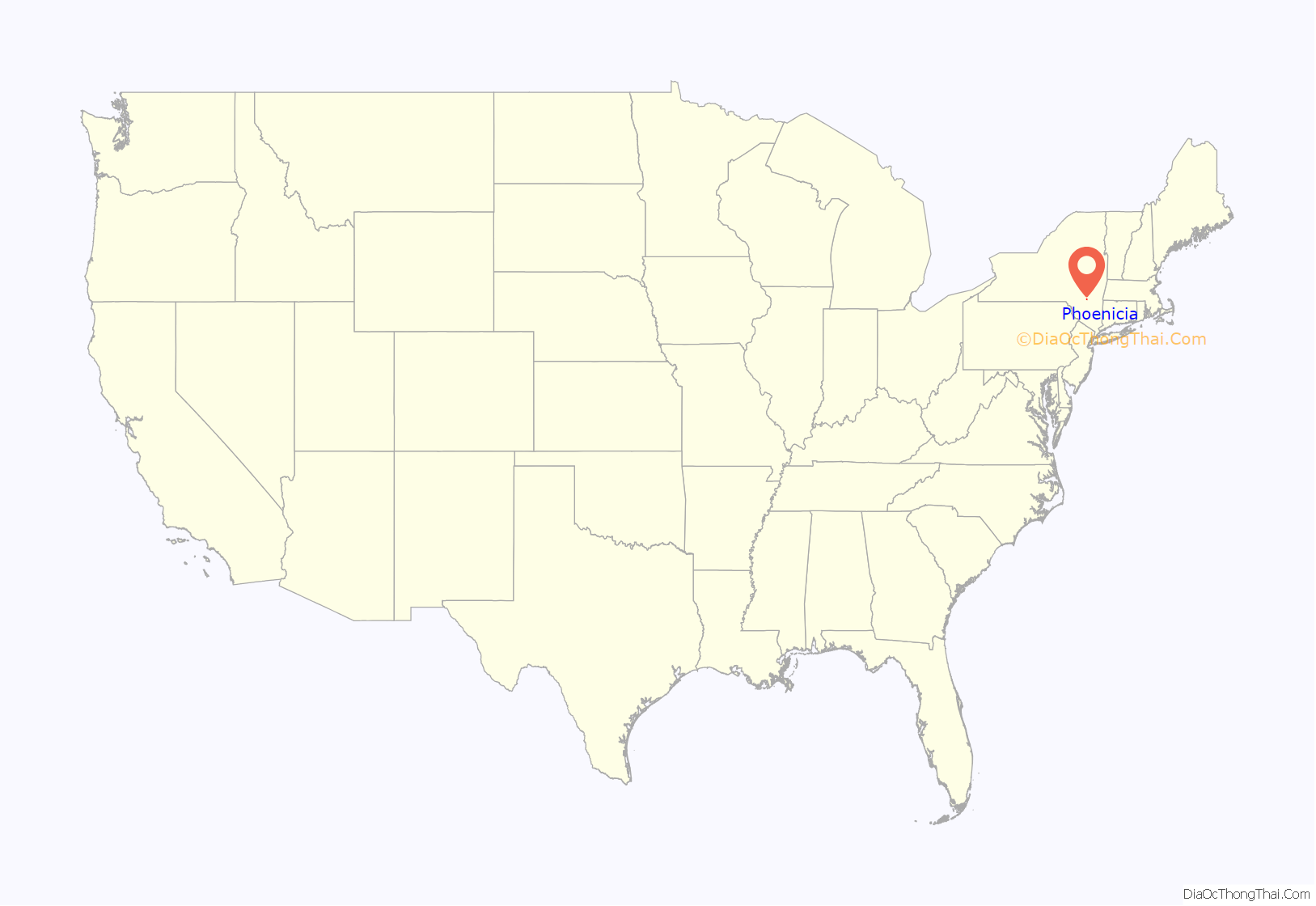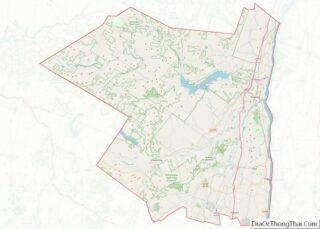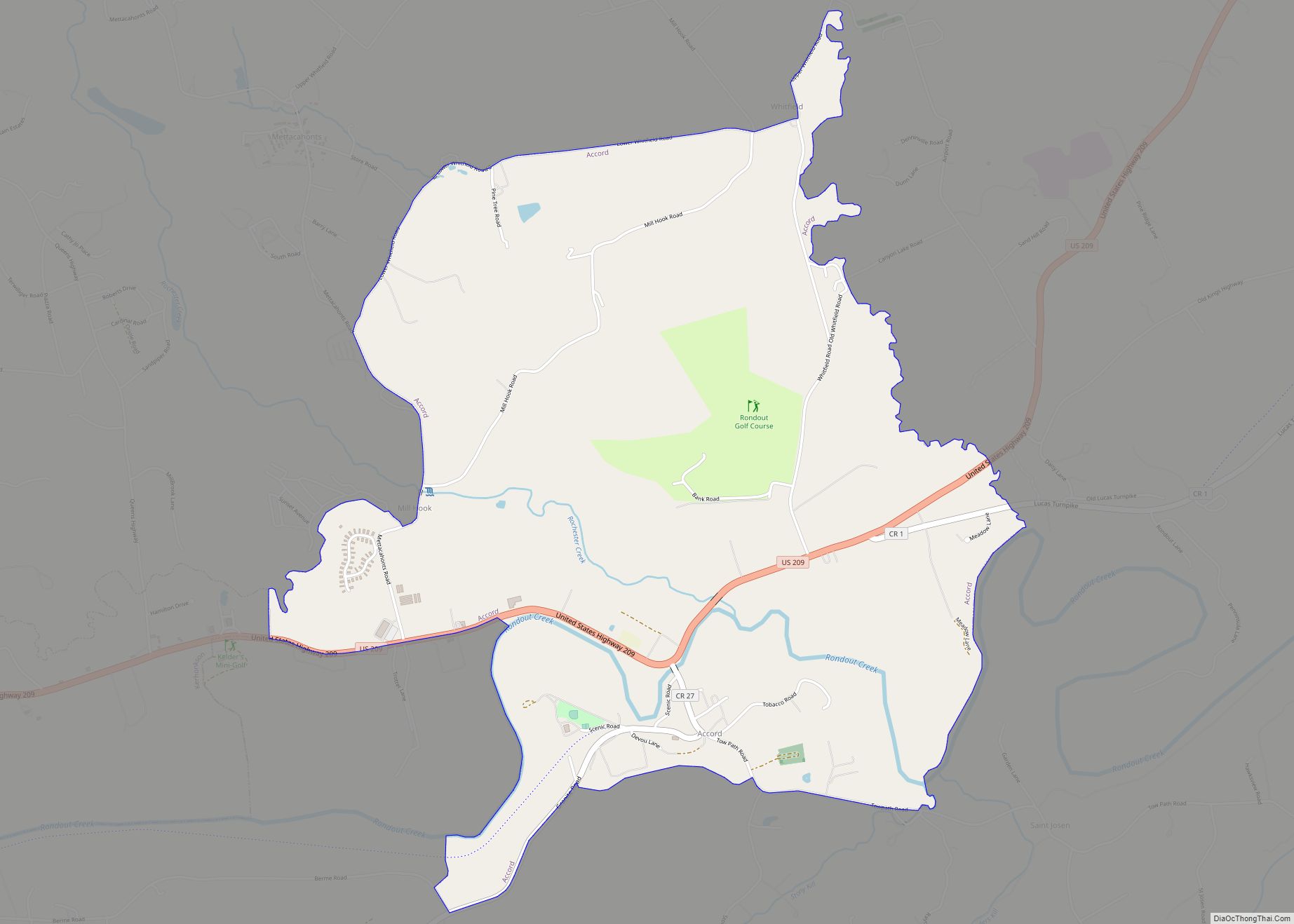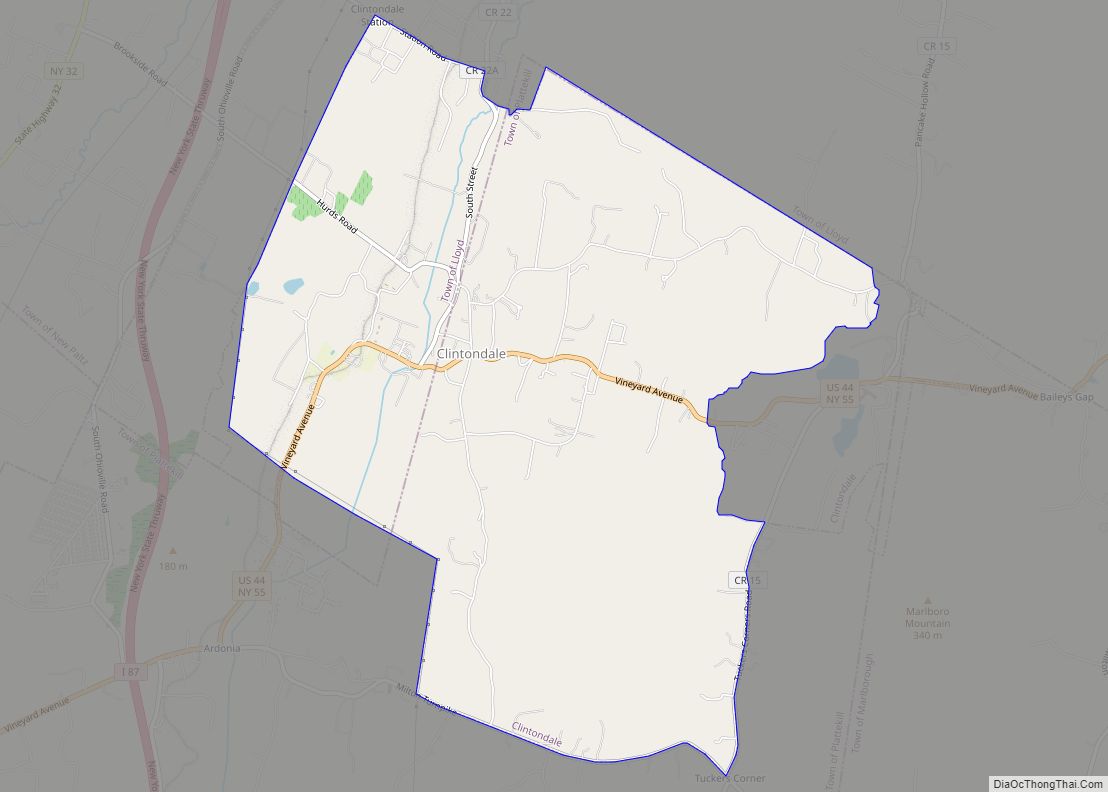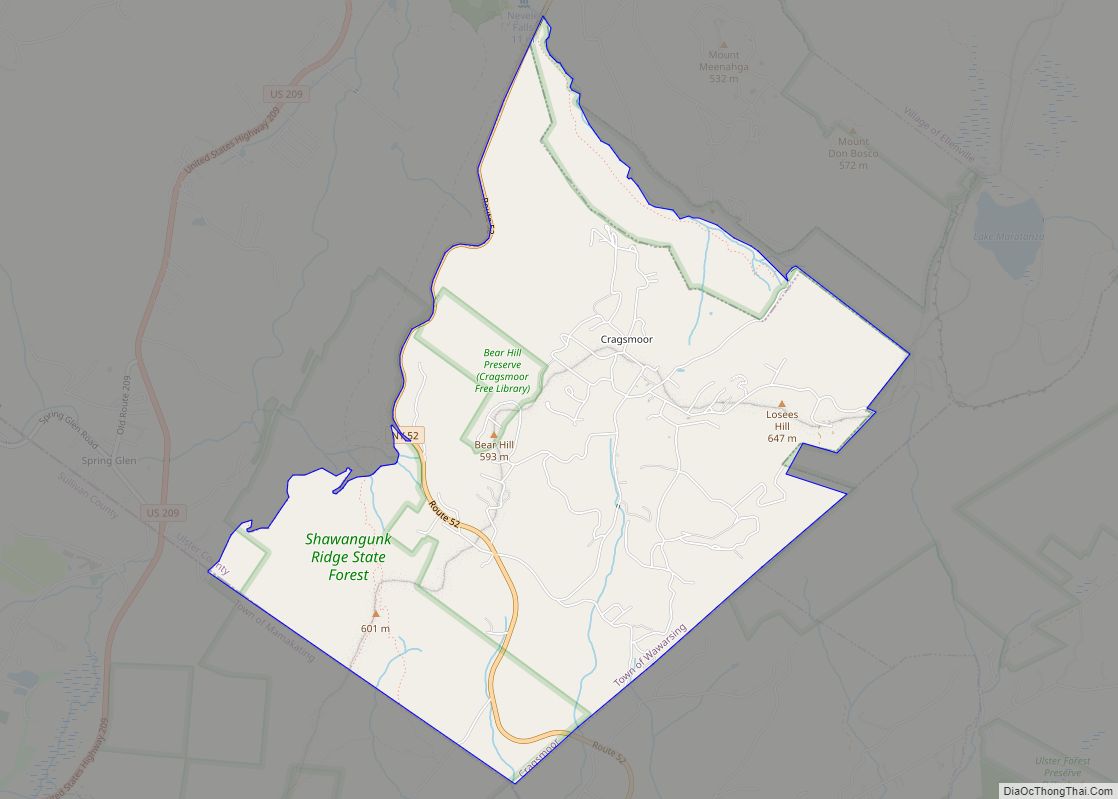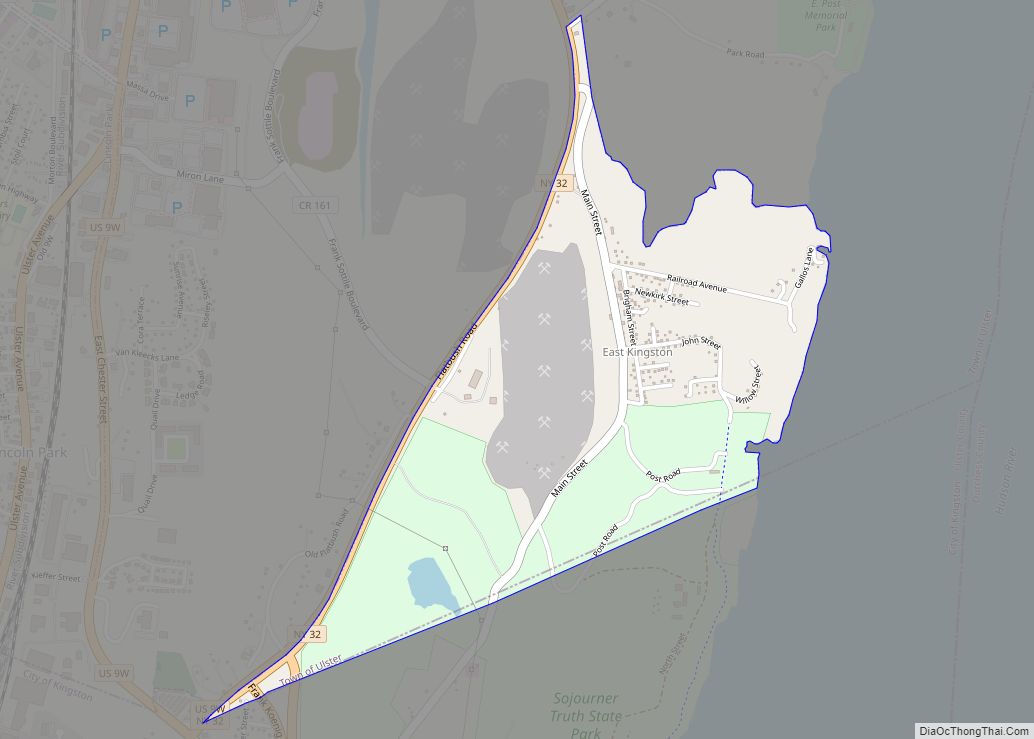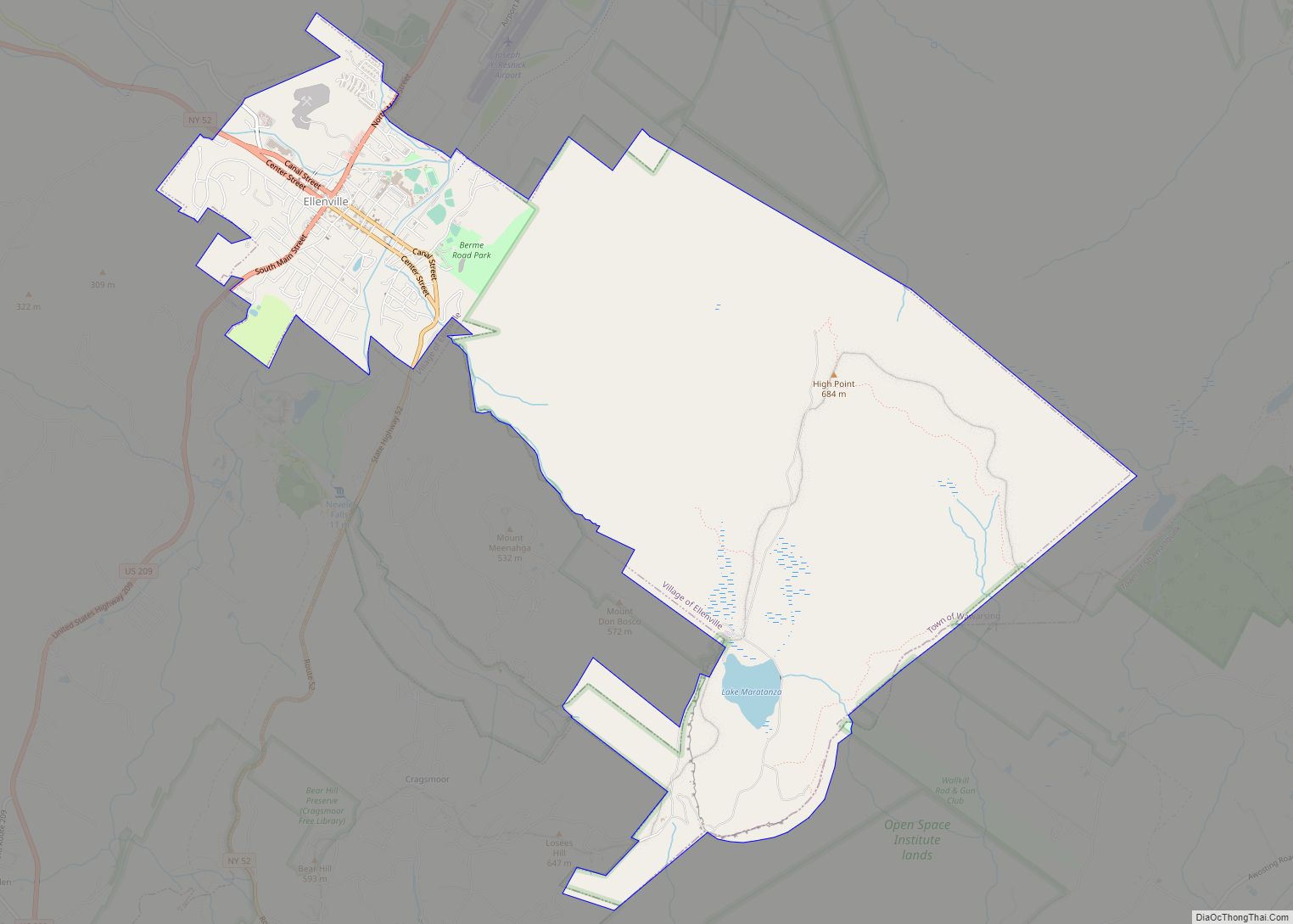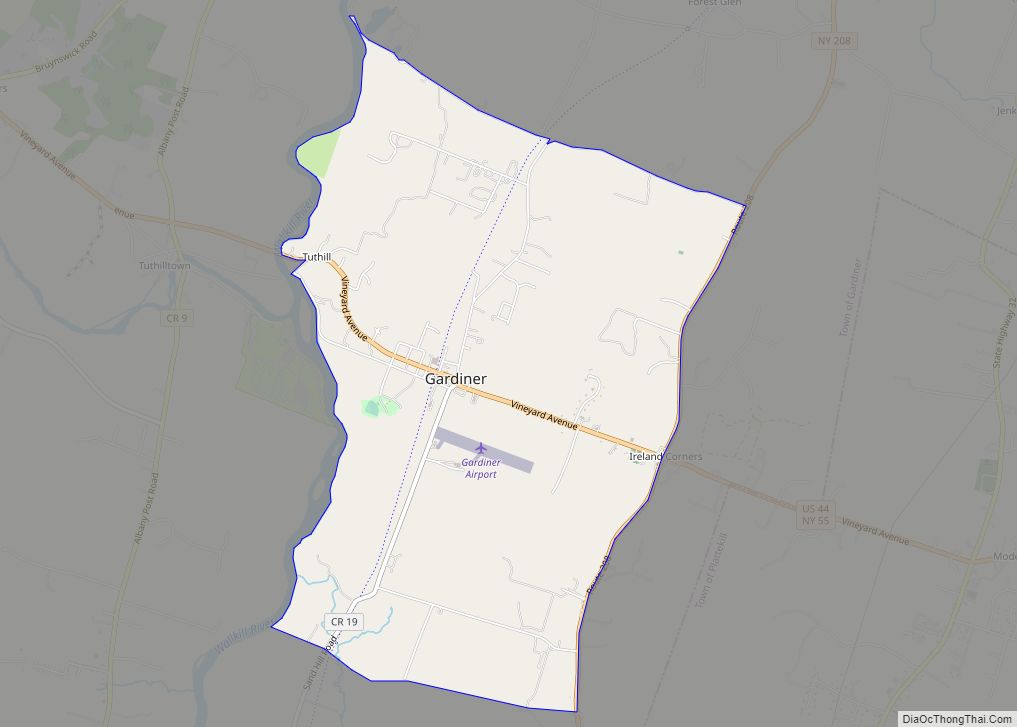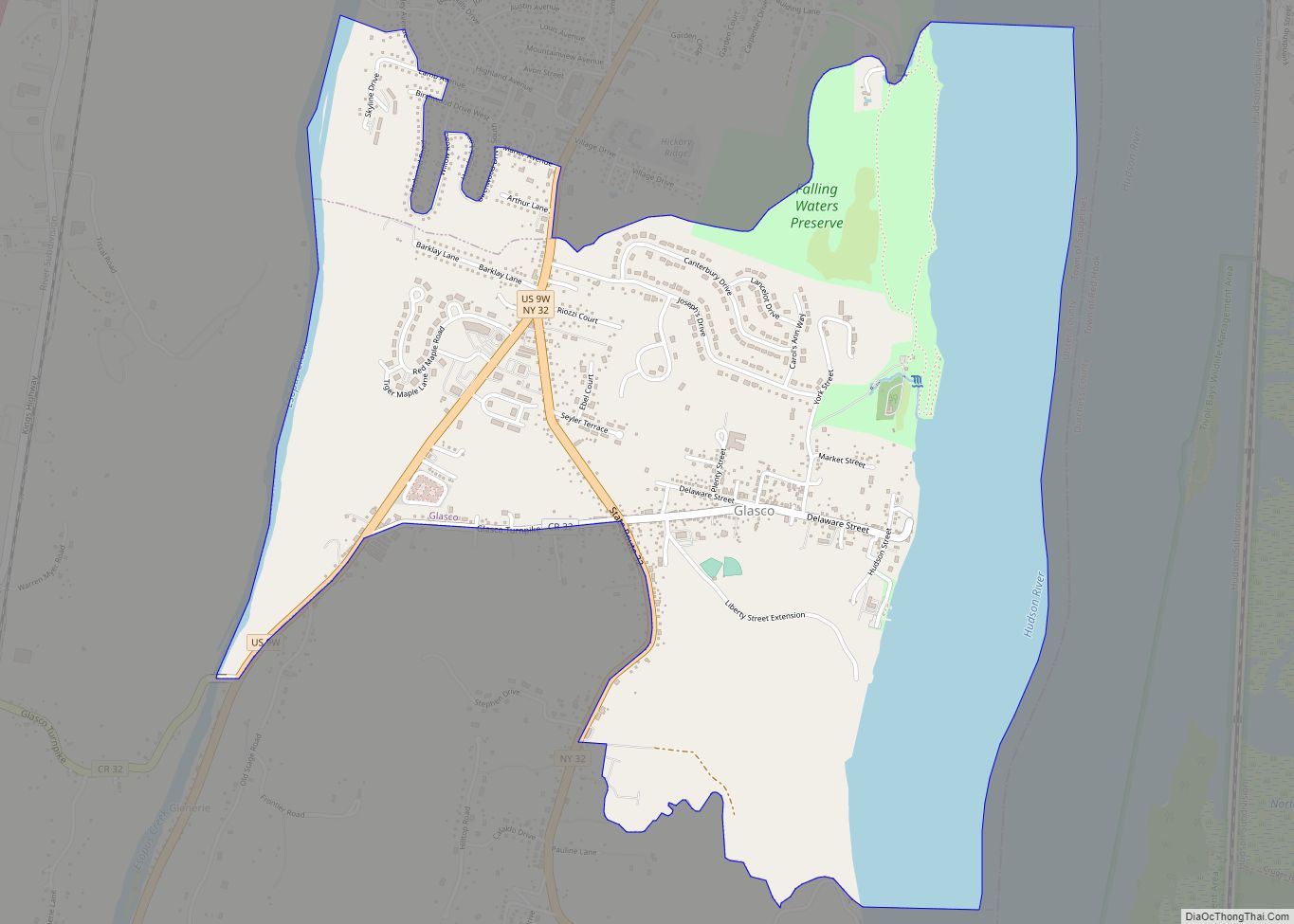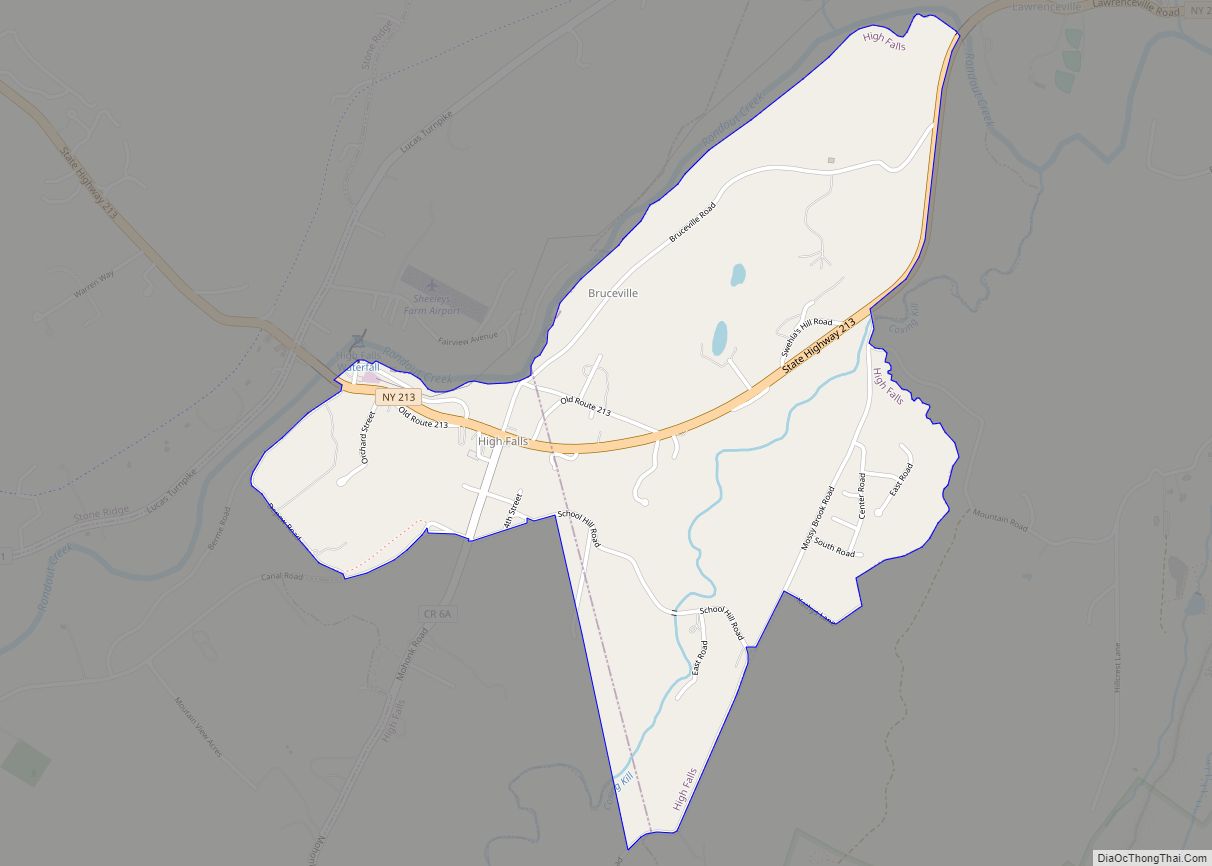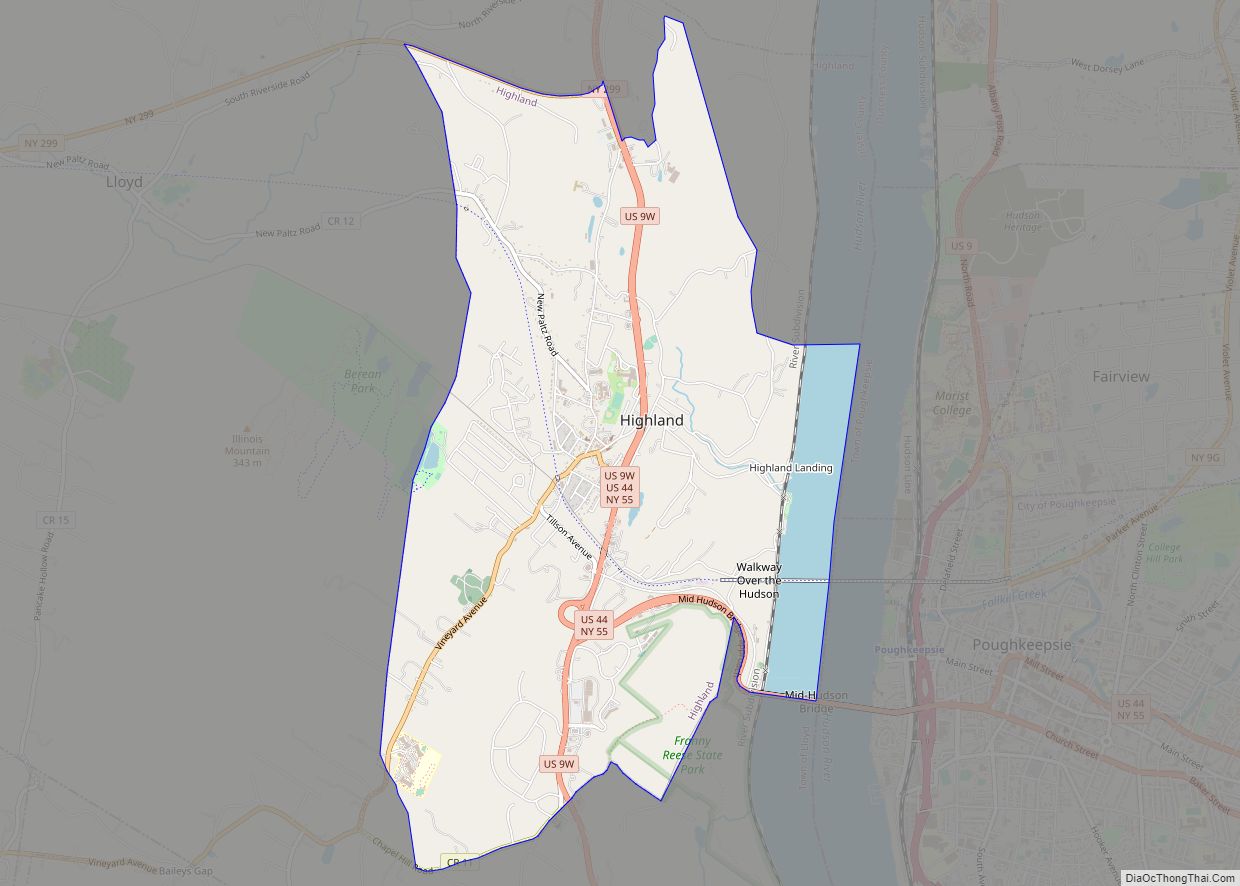Phoenicia is a hamlet (and census-designated place) of Shandaken in Ulster County, New York, United States. The population was 268 at the 2020 census, making it the second highest populated community in the town. The village center is located just off Route 28 at its junction with Route 214 and is nestled at the base of three peaks, Mount Tremper, Romer Mountain, and Sheridan Mountain. The community sits at the confluence of the Esopus Creek and Stony Clove Creek. A popular getaway for New Yorkers, the hamlet has frequented many tourism guides as among the best vacation towns in the greater New York City area.
| Name: | Phoenicia CDP |
|---|---|
| LSAD Code: | 57 |
| LSAD Description: | CDP (suffix) |
| State: | New York |
| County: | Ulster County |
| Elevation: | 827 ft (252 m) |
| Total Area: | 0.46 sq mi (1.18 km²) |
| Land Area: | 0.46 sq mi (1.18 km²) |
| Water Area: | 0.00 sq mi (0.00 km²) |
| Total Population: | 268 |
| Population Density: | 589.01/sq mi (227.31/km²) |
| ZIP code: | 12464 |
| Area code: | 845 |
| FIPS code: | 3657650 |
| GNISfeature ID: | 0960320 |
Online Interactive Map
Click on ![]() to view map in "full screen" mode.
to view map in "full screen" mode.
Phoenicia location map. Where is Phoenicia CDP?
History
The geographic area that would eventually be named Phoenicia was fertile hunting and fishing land for the Mohawk, Mohican, and Lenape peoples for hundreds of years before European settlers arrived. Of particular note are the Esopus Lenape, who are believed to be the people who spent the most time in the area.
The first European settlement in the area is believed to be in the mid-18th century, as Ulster county as a whole began to see more European immigration and land access in the more fertile lower valleys became restricted. These access restrictions particularly began to push poorer subsistence farmers into the Catskill mountains. Most of these early settlers were of Dutch, English, and Scottish origin, with Dutch being the most commonly spoken European language.
The 19th century saw industry move into the area, with tanning becoming the dominant employer early and eventually ceding to bluestone quarrying towards the latter half of the century. This era saw the decline of Dutch cultural dominance.
The hamlet housed the Phoenix Tannery from 1836 until it closed around 1870, eventually burning down in 1873. The Phoenix, along with most of the new industry in the area, primarily employed recent Irish immigrants and was at different times known as the Newkirk and Simpson Tannery, Simpson Tannery, Simpson’s Tannery, and Edinburg Tannery. Many believe the Phoenix Tannery is the source of the hamlet’s name.
As the extractive industries of tanning and quarrying began to wane in the region towards the latter half of the 1800s, tourism began to take off with Phoenicia a major center. An 1879 article from the New York Times, “In The Ulster Catskills: Attractions of Shandaken Valley”, notes “many thousands of people will come [to the Catskills] annually to escape the heat of the pent-up cities, and spend some of their hard-earned money in gaining renewed strength and vigor of body and mind.”
The Ulster and Delaware Railroad arrived at this community first, making it the first to develop the tourist industry which is still a major part of the local economy. The New York Central Railroad acquired the railroad on February 1, 1932. It continued passenger service through the development, albeit only once-daily except Sundays in its final years. That service ended on March 31, 1954.
In 1960, the Empire State Railway Museum opened in the historic Ulster & Delaware Phoenicia Railroad Station.
On August 23, 1986, Phoenicia became the home of The Shandaken Eagle, a two-ton cast-iron eagle with a 13 foot wingspan who originally lived atop New York City’s Grand Central Depot.
The Phoenicia Railroad Station was listed on the National Register of Historic Places in 1995.
Beginning in 2010, the town has hosted the Phoenicia International Festival of the Voice every August.
Phoenicia Road Map
Phoenicia city Satellite Map
Geography
Phoenicia is located at 42°4′53″N 74°18′47″W / 42.08139°N 74.31306°W / 42.08139; -74.31306 (42.081266, -74.313019).
According to the United States Census Bureau, the CDP has a total area of 0.5 square miles (1.3 km), all land.
See also
Map of New York State and its subdivision:- Albany
- Allegany
- Bronx
- Broome
- Cattaraugus
- Cayuga
- Chautauqua
- Chemung
- Chenango
- Clinton
- Columbia
- Cortland
- Delaware
- Dutchess
- Erie
- Essex
- Franklin
- Fulton
- Genesee
- Greene
- Hamilton
- Herkimer
- Jefferson
- Kings
- Lake Ontario
- Lewis
- Livingston
- Madison
- Monroe
- Montgomery
- Nassau
- New York
- Niagara
- Oneida
- Onondaga
- Ontario
- Orange
- Orleans
- Oswego
- Otsego
- Putnam
- Queens
- Rensselaer
- Richmond
- Rockland
- Saint Lawrence
- Saratoga
- Schenectady
- Schoharie
- Schuyler
- Seneca
- Steuben
- Suffolk
- Sullivan
- Tioga
- Tompkins
- Ulster
- Warren
- Washington
- Wayne
- Westchester
- Wyoming
- Yates
- Alabama
- Alaska
- Arizona
- Arkansas
- California
- Colorado
- Connecticut
- Delaware
- District of Columbia
- Florida
- Georgia
- Hawaii
- Idaho
- Illinois
- Indiana
- Iowa
- Kansas
- Kentucky
- Louisiana
- Maine
- Maryland
- Massachusetts
- Michigan
- Minnesota
- Mississippi
- Missouri
- Montana
- Nebraska
- Nevada
- New Hampshire
- New Jersey
- New Mexico
- New York
- North Carolina
- North Dakota
- Ohio
- Oklahoma
- Oregon
- Pennsylvania
- Rhode Island
- South Carolina
- South Dakota
- Tennessee
- Texas
- Utah
- Vermont
- Virginia
- Washington
- West Virginia
- Wisconsin
- Wyoming
